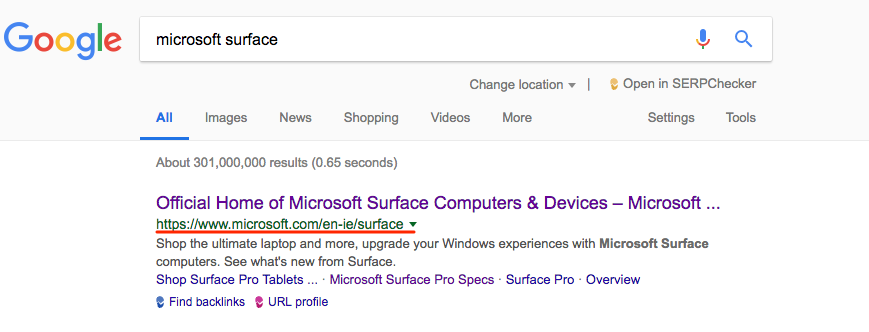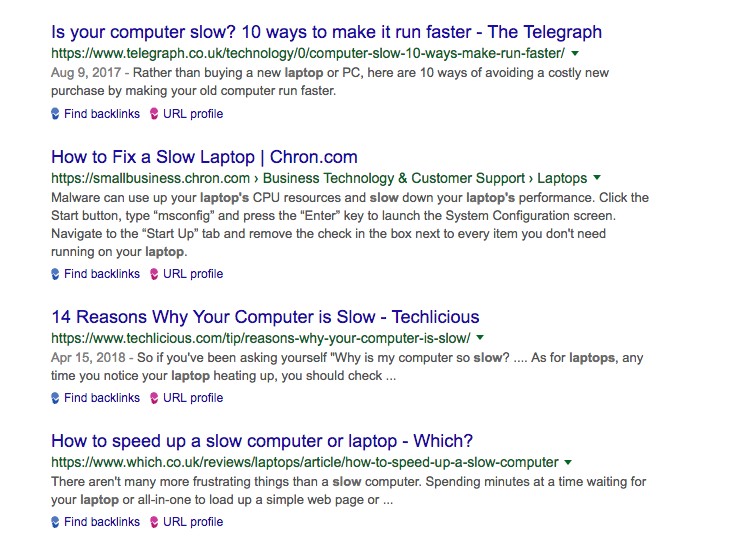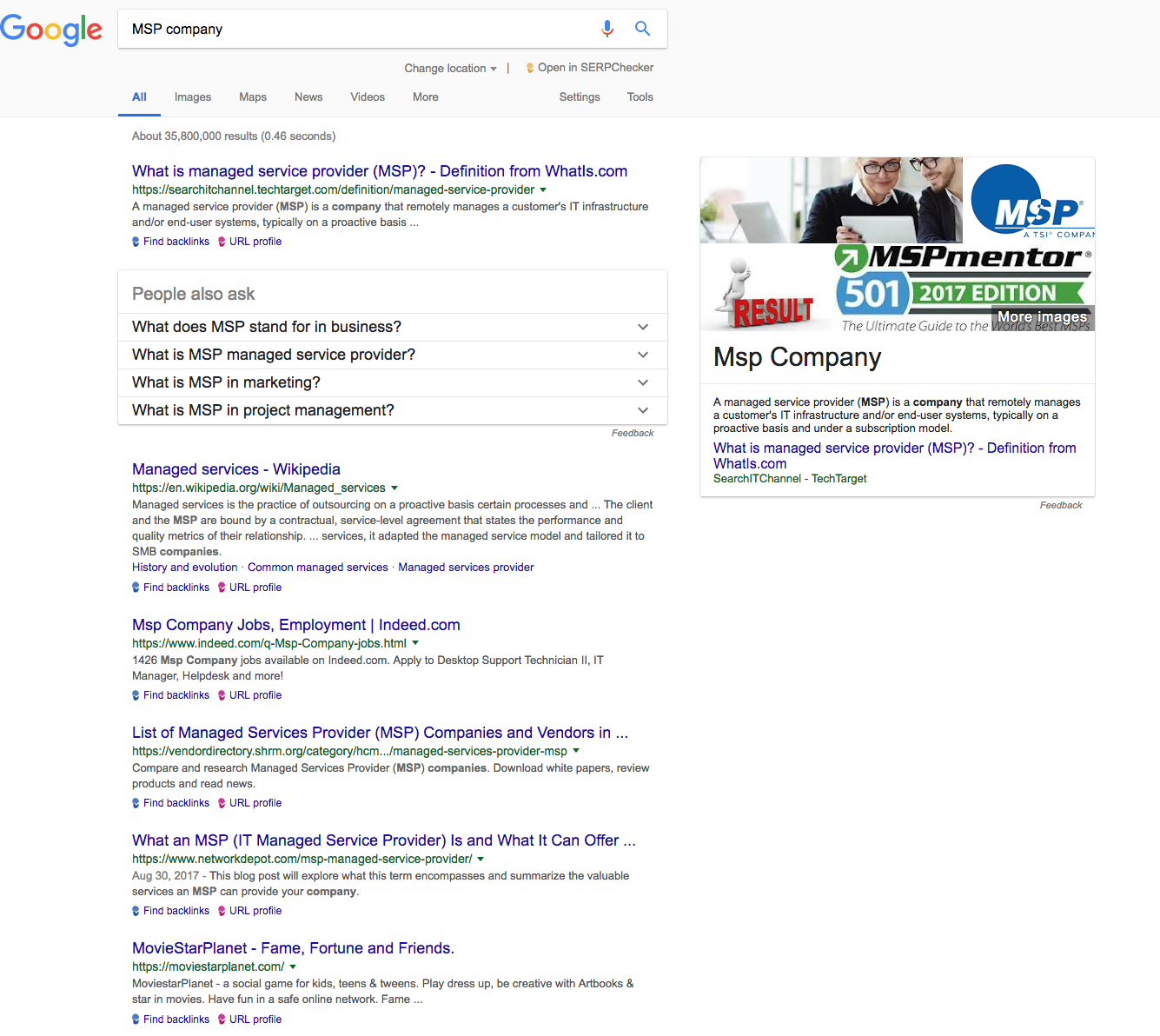It sounds so enticing, doesn’t it?
You sprinkle relevant keywords across your pages, optimize the meta tags and a handful of other elements, and…
…before you know it, thousands of potential customers start finding your MSP in the search engines.
The problem? You’re still trying to figure out what search queries to optimize your pages for, right?
You know that to rank, you must target specific search queries – keywords your customers would use in their buying journey.
But in spite of trying super hard, you still can’t figure out what they are.
If so, then we have something truly amazing for you:
A complete guide to different types of keywords and search queries.
You’ll learn what keyword types to use, what is the search intent, and what search queries to optimize sections of your website for.
So, let’s begin.
What Types of Keywords Customers Use?
More often than not, marketers approach keyword research wrong.
When thinking about SEO, they consider search queries they’d use.
They think of the product or service and use the way they’d describe it as a good starting point for finding new keywords.
But unfortunately, in doing so, they forget the most critical aspect of SEO – their target customers.
Because you see, the people you’re trying to attract from organic search results mightn’t necessarily describe your services the same way as you would. What’s more, they might have a different reason for typing a specific phrase in the search box than you (more on that in a minute.)
And so, as the first step, let’s consider different types of search queries your customers would use in Google.
These are:
Branded Keywords – phrases that include your brand, product or service name. “Microsoft Surface” is a good example. So is “Nike.” Both describe a specific brand a person is looking to find out more about.
And Google has a relatively simple task with identifying the most relevant search results to display. Anyone who is searching for “Microsoft Surface” will, most likely, be looking for information about that product.

Non-branded Keywords. As you may have guessed, this category describes every phrase that does not relate to any specific brand. For example, “IT company,” “Slow laptop,” “Server issues,” and so on.
Unlike branded keywords, these queries pose some challenges for Google. Why, because they can often ask for various information. Take the “slow laptop” phrase for example. Is a person using this term to look for information to speed up their machine? Or are they conducting research into the slowest laptops on the market? Or perhaps they want to find a particular machine. However, the only thing they know about it is that it’s slow.
And for that reason, Google categorizes those keywords by another factor – the search intent.
Let me explain…
What is the search intent?
The search intent defines a reason why people conduct a specific search. It helps Google identify why they use a particular phrase. Is it to find more information? To find answers to a particular question? Or maybe they do so because they want to buy something?
Over the years, Google has developed algorithms to determine the search intent behind various keywords. And with that, it has become better and better at ranking pages that promise to deliver on that intent.
There are four types of keyword intents for SEO:
Informational, describing phrases customers use when looking for any information. It could be movie times, advice on changing a flat tire, even information about keyword types. As long as someone types a query with the intention to learn something, Google assumes it has the informational intent.
Let’s go back to our phrase “slow laptop.” We’ve already established that a person using it could be looking for different types of search results.
So, what does Google consider valuable information for this phrase then? For one, judging by the search results, it considers the phrase informational. As a result, the majority of search results offer advice on the reasons for slow laptop performance.
See?

Navigational intent refers to a desire to reach a specific destination online, a website or specific content. For example, anyone searching for “CNN,” most likely, wants to get to the news website. The same goes for queries like “Irish Times” or even your website name, especially, if it’s different than your brand name.
The transactional intent, as the name suggests, relates to searches with the intention to purchase something. Common examples of transactional phrases include “buy Lenovo laptop,” “where to buy the best running shoes,” and so on.
Finally, commercial intent describes phrases that customers would use to research future purchases. For example, “which laptop is the best for school” or “best software for medical center.”
The Local Intent
Google often speaks of one more intent, local. It typically relates to searches conducted on a mobile device, with the intention to find a local business or information.
Local search queries include both branded and non-branded keywords. Some customers might simply search for a company’s address or a phone number. Others use the local search to identify a vendor in their vicinity.
How Intent Affects Rankings (And Subsequently, Your Keywords)?
At its core, Google wants to do just one thing. The search engine wants to deliver the most relevant information to its users.
And it does that in the simplest possible way:
It matches the search intent for a keyword with pages that promise to deliver it.
Which means that the content you optimize for a specific search query MUST also match its intent.
Which is not that obvious, by the way.
Let me show you an example. Let’s take the phrase “MSP company.” I’d imagine that anyone using this keyword, wants to find an MSP provider, right?
So, let’s take a look at the search results…

Can you see it?
None of the Google’s first page results point to an MSP company.
Most explain what the term stands for, instead. Others offer a list of MSP vendors.
Therefore, the above suggests that Google considers users to expect a completely different content for the keyword than I.
As a result, optimizing the home page for the term, for example, would diminish its chances to rank. Greatly.
So, what to do with all this knowledge?
How to Use Different Types of Keywords on MSP Website
I admit that we’ve covered a lot in this guide already. From different keyword types to search intents. And we also discussed how they affect your website’s rankings.
So, let’s put it all together now. Here is the breakdown of different website sections and what keywords to use for each.
| Keyword Type | Page Type | Reason |
| Branded, Navigational | Homepage | As you’ve seen with the MSP Company example, many seemingly category phrases return informational results. Therefore, navigational and branded keywords offer the biggest opportunity to attract relevant traffic to the home page. |
| Local | Contact and any specific location pages | Keywords denoting locations help customers looking to find a vendor or their location. Ideal for pointing them to your contact or branch pages, if any. |
| Branded | Service Pages | Service-related keywords often have the informational intent. And just like with the homepage, the chances of ranking a service page for them are slim. But you can use them to extend your brand’s reach. |
| Informational | Blog posts, landing pages, SEO pillar pages | These content types deliver information and are ideal for targeting keywords with that intent. |
And that’s it
Now you know what types of keywords to use on different pages on your site.
All that’s left is to start finding the most relevant terms that could attract new visitors.
Best of luck
Sign up below to receive our monthly IT Services advice + other cool stuff straight to your inbox.